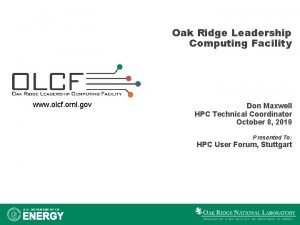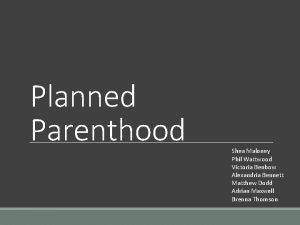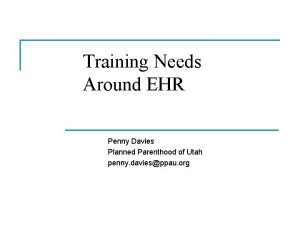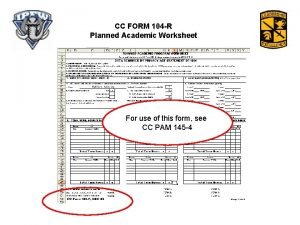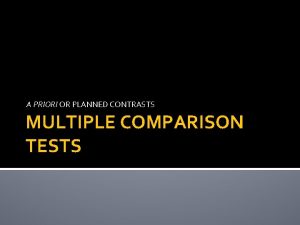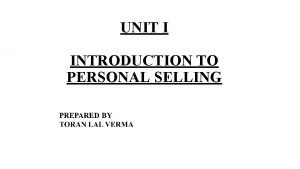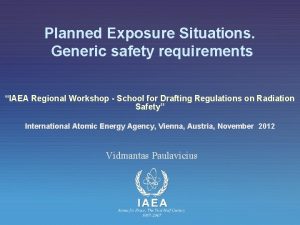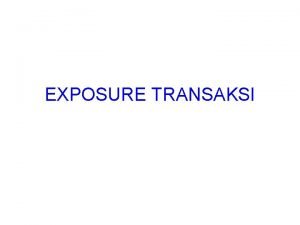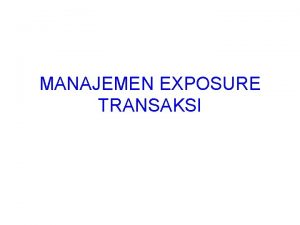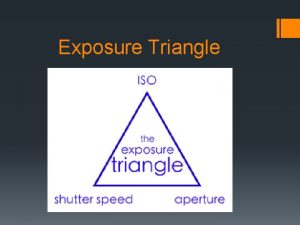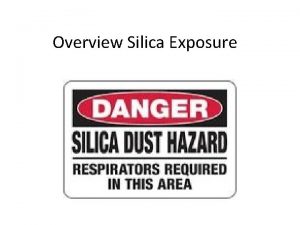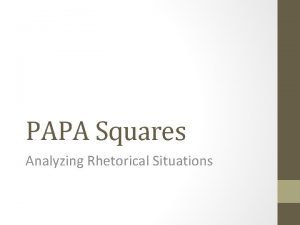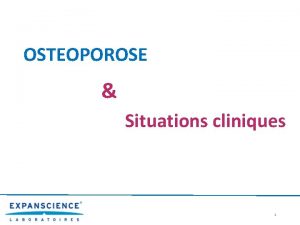Module 1 12 Planned Exposure Situations Medical Exposure





















































































- Slides: 85

Module 1. 12 Planned Exposure Situations Medical Exposure (GSR part 3) “IAEA REGIONAL WORKSHOP ON SCHOOL FOR DRAFTING REGULATIONS ON RADIATION SAFETY” International Atomic Energy Agency, Vienna, Austria, 3 - 14 November 2014 Julius Žiliukas

Content • Responsibilities of government specific to • • medical exposure Responsibilities of the regulatory body specific to medical exposure Responsibilities of registrants and licensees specific to medical exposure Justification of medical exposures Optimization of protection and safety Planned Exposure Situations. Medical Exposure 2

Content • Pregnant or breast-feeding women • Release of patients after radionuclide therapy • Unintended and accidental medical exposures • Reviews and records Planned Exposure Situations. Medical Exposure 3

Introduction Inhalation - Radon Progeny 38. 1% (1. 0 m. Sv) Medical Diagnosis 22. 9% (0. 6 m. Sv) Cosmic Rays 11. 4% (0. 3 m. Sv) Planned Exposure Situations. Medical exposure 4

Introduction Planned Exposure Situations. Medical Exposure 5

Introduction Planned Exposure Situations. Medical Exposure 6

Introduction Planned Exposure Situations. Medical exposure 7

Introduction Planned Exposure Situations. Medical Exposure 8

Introduction Planned Exposure Situations. Medical exposure 9

General • The requirements in respect of medical exposure in planned exposure situations apply to all medical exposures, including intended, unintended and accidental exposures. • Dose limits do not apply to medical exposures. Planned Exposure Situations. Medical Exposure 10

Responsibilities of the government specific to medical exposure • The government shall ensure that relevant parties are authorized to assume their roles and responsibilities and that are established: • diagnostic reference levels, • dose constraints, • criteria and guidelines for the release of patients. Planned Exposure Situations. Medical Exposure 11

Responsibilities of the government specific to medical exposure • The government shall ensure that the following are established: • (a) Dose constraints to be fulfilled for: • 1. Exposures of carers and comforters; • 2. Exposures due to diagnostic investigations of volunteers participating in a programme of biomedical research. Planned Exposure Situations. Medical Exposure 12

Responsibilities of the government specific to medical exposure • The government shall ensure that the following are established: • (b) Criteria and guidelines for the release of patients who have undergone therapeutic procedures using unsealed sources or patients who still retain implanted sealed sources. Planned Exposure Situations. Medical Exposure 13

Responsibilities of the regulatory body specific to medical exposure • The regulatory body shall require that health professionals with responsibilities for medical exposure are specialized in the appropriate area and that they meet the requirements for: • education, • training and • competence in the relevant specialty. Planned Exposure Situations. Medical Exposure 14

Responsibilities of the regulatory body specific to medical exposure • The regulatory body shall authorize particular medical radiation facility only if it’s personnel (radiological medical practitioners, medical physicists, medical radiation technologists and any other health professionals): • (a) are specialized in the appropriate area; • (b) meet the respective requirements for education, training and competence in radiation protection; • (c) are named in a list maintained up to date by the registrant or licensee. Planned Exposure Situations. Medical Exposure 15

Responsibilities of registrants and licensees specific to medical exposure • Registrants and licensees shall ensure that no patient, whether symptomatic or asymptomatic, undergoes a medical exposure unless: • (a) The radiological procedure has been requested by a referring medical practitioner and information on the clinical context has been provided, or it is part of an approved health screening programme; Planned Exposure Situations. Medical Exposure 16

Responsibilities of registrants and licensees specific to medical exposure • Registrants and licensees shall ensure that no patient, whether symptomatic or asymptomatic, undergoes a medical exposure unless: • (b) The medical exposure has been justified through consultation between the radiological medical practitioner and the referring medical practitioner, as appropriate, or it is part of an approved health screening programme; Planned Exposure Situations. Medical Exposure 17

Responsibilities of registrants and licensees specific to medical exposure • Registrants and licensees shall ensure that no patient, whether symptomatic or asymptomatic, undergoes a medical exposure unless: • (c) A radiological medical practitioner has assumed responsibility for protection and safety in the planning and delivery of the medical exposure; Planned Exposure Situations. Medical Exposure 18

Responsibilities of registrants and licensees specific to medical exposure • Registrants and licensees shall ensure that no patient, whether symptomatic or asymptomatic, undergoes a medical exposure unless: • (d) The patient or the patient’s legal authorized representative has been informed, as appropriate, of the expected diagnostic or therapeutic benefits of the radiological procedure as well as the radiation risks. Planned Exposure Situations. Medical Exposure 19

Responsibilities of registrants and licensees specific to medical exposure • Registrants and licensees shall ensure that no individual incurs a medical exposure as part of a programme of biomedical research unless the exposure has been approved by an ethics committee (or other institutional body that has been assigned similar functions by the relevant authority) and a radiological medical practitioner takes responsibility. Planned Exposure Situations. Medical Exposure 20

Responsibilities of registrants and licensees specific to medical exposure • Registrants and licensees shall ensure that no individual receives a medical exposure as a career or comforter unless he or she has received, and has indicated an understanding of, relevant information on radiation protection and information on the radiation risks prior to providing care and comfort to an individual undergoing a radiological procedure. Planned Exposure Situations. Medical Exposure 21

Responsibilities of registrants and licensees specific to medical exposure • Registrants and licensees shall ensure that: • (a) The radiological medical practitioner performing or supervising the radiological procedure has assumed responsibility for ensuring overall protection and safety for patients during the planning and delivery of the medical exposure, including the justification of the procedure and the optimization of protection and safety, in cooperation with the medical physicist and the medical radiation technologist ; Planned Exposure Situations. Medical Exposure 22

Responsibilities of registrants and licensees specific to medical exposure • Registrants and licensees shall ensure that: • (b) Radiological medical practitioners, medical physicists, medical radiation technologists and other health professionals with specific duties in relation to protection and safety for patients in a given radiological procedure have the appropriate specialization; Planned Exposure Situations. Medical Exposure 23

Responsibilities of registrants and licensees specific to medical exposure • Registrants and licensees shall ensure that: • (c) Sufficient medical personnel and paramedical personnel are available as specified by the health authority; Planned Exposure Situations. Medical Exposure 24

Responsibilities of registrants and licensees specific to medical exposure • Registrants and licensees shall ensure that: • (d) For therapeutic uses of radiation, the requirements for calibration, dosimetry and quality assurance, including the acceptance and commissioning of medical radiological equipment, are fulfilled by or under the supervision of a medical physicist; Planned Exposure Situations. Medical Exposure 25

Responsibilities of registrants and licensees specific to medical exposure • Registrants and licensees shall ensure that: • (e) For diagnostic radiological procedures and image guided interventional procedures, the requirements for medical imaging, calibration, dosimetry and quality assurance, including the acceptance and commissioning of medical radiological equipment are fulfilled by or under the oversight of or with the documented advice of a medical physicist, whose degree of involvement is determined by the complexity of the radiological procedures and the associated radiation risks. Planned Exposure Situations. Medical Exposure 26

Justification of medical exposures • Medical exposures shall be justified by weighing the expected diagnostic or therapeutic benefits that they yield against the radiation detriment that they might cause, with account taken of the benefits and the risks of available alternative techniques that do not involve medical exposure. Planned Exposure Situations. Medical Exposure 27

Justification of medical exposures • Generic justification of a radiological procedure shall be carried out by the health authority in conjunction with appropriate professional bodies, and shall be reviewed from time to time, with account taken of advances in knowledge and technological developments. Planned Exposure Situations. Medical Exposure 28

Justification of medical exposures • The justification of medical exposure for an individual patient shall be carried out through consultation between the radiological medical practitioner and the referring medical practitioner with account taken, in particular for patients who are pregnant or breast-feeding or paediatric Planned Exposure Situations. Medical Exposure 29

Justification of medical exposures Planned Exposure Situations. Generic safety requirements 30

Justification of medical exposures • Any radiological procedure on an asymptomatic individual that is intended to be performed for the early detection of disease, but not as part of an approved health screening programme, shall require specific justification for that individual by the radiological medical practitioner and the referring medical practitioner, in accordance with the guidelines of relevant professional bodies or the health authority. Planned Exposure Situations. Medical Exposure 31

Optimization of protection and safety • Registrants and licensees and radiological medical practitioners shall ensure that protection and safety is optimized for each medical exposure. Planned Exposure Situations. Medical Exposure 32

Optimization of protection and safety Design considerations: • Registrants and licensees, in cooperation with suppliers, shall ensure that medical radiological equipment, and software that could influence the delivery of medical exposure is used only if it conforms to the applicable standards of the International Electrotechnical Commission and the International Organization for Standardization or to national standards adopted by the regulatory body. Planned Exposure Situations. Medical Exposure 33

Optimization of protection and safety Operational considerations: • For diagnostic radiological procedures and image guided interventional procedures, the radiological medical practitioner shall ensure that the following are used: • (a) Appropriate medical radiological equipment and software and also, for nuclear medicine, appropriate radiopharmaceuticals; Planned Exposure Situations. Medical Exposure 34

Optimization of protection and safety Operational considerations: • For diagnostic radiological procedures and image guided interventional procedures, the radiological medical practitioner shall ensure that the following are used: • (b) Appropriate techniques and parameters to deliver a medical exposure of the patient that is the minimum necessary to fulfil the clinical purpose of the procedure. Planned Exposure Situations. Medical Exposure 35

Optimization of protection and safety Operational considerations: • For therapeutic radiological procedures, the radiological medical practitioner, in cooperation with the medical physicist and the medical radiation technologist, shall ensure that for each patient the exposure of volumes other than the planning target volume is kept as low as reasonably achievable consistent with delivery of the prescribed dose to the planning target volume within the required tolerances. Planned Exposure Situations. Medical Exposure 36

Optimization of protection and safety Operational considerations: • For therapeutic radiological procedures in which radiopharmaceuticals are administered, the radiological medical practitioner shall ensure that for each patient the appropriate radiopharmaceutical with the appropriate activity is selected and administered so that the radioactivity is primarily localized in the organ(s) of interest, while the radioactivity in the rest of the body is kept as low as reasonably achievable. Planned Exposure Situations. Medical Exposure 37

Optimization of protection and safety Operational considerations: • Registrants and licensees shall ensure that the particular aspects of medical exposures are considered in the optimization process for: • (a) Paediatric patients subject to medical exposure; • (b) Individuals subject to medical exposure as part of a health screening programme; • (c) Volunteers subject to medical exposure as part of a programme of biomedical research; Planned Exposure Situations. Medical Exposure 38

Optimization of protection and safety Operational considerations: • Registrants and licensees shall ensure that the particular aspects of medical exposures are considered in the optimization process for: • (d) Relatively high doses to the patient; • (e) Exposure of the embryo or fetus, in particular for radiological procedures in which the abdomen or pelvis of the pregnant woman is exposed to the useful radiation beam or could otherwise receive a significant dose; Planned Exposure Situations. Medical Exposure 39

Optimization of protection and safety Operational considerations: • Registrants and licensees shall ensure that the particular aspects of medical exposures are considered in the optimization process for: • (f) Exposure of a breast-fed infant as a result of a female patient undergoing a radiological procedure with radiopharmaceuticals. Planned Exposure Situations. Medical Exposure 40

Optimization of protection and safety Calibration: • The medical physicist shall ensure that: • (a) All sources giving rise to medical exposure are calibrated in terms of appropriate quantities using internationally accepted or nationally accepted protocols; • (b) Calibrations are carried out at the time of commissioning a unit prior to clinical use, after any maintenance procedure that could affect the dosimetry and at intervals approved by the regulatory body; Planned Exposure Situations. Medical Exposure 41

Optimization of protection and safety Calibration: Planned Exposure Situations. Medical Exposure 42

Optimization of protection and safety • Calibration • The medical physicist shall ensure that: • (c) Calibrations of radiotherapy units are subject to independent verification prior to clinical use; • (d) Calibration of all dosimeters used for dosimetry of patients and for the calibration of sources is traceable to a standards dosimetry laboratory. Planned Exposure Situations. Medical Exposure 43

Optimization of protection and safety Dosimetry of patients: • Registrants and licensees shall ensure that dosimetry of patients is performed and documented by or under the supervision of a medical physicist, including dosimetry to determine the following: • (a) For diagnostic medical exposures, typical doses to patients for common radiological procedures; Planned Exposure Situations. Medical Exposure 44

Optimization of protection and safety Dosimetry of patients • Registrants and licensees shall ensure that dosimetry of patients is performed and documented by or under the supervision of a medical physicist, including dosimetry to determine the following: • (b) For image guided interventional procedures, typical doses to patients; Planned Exposure Situations. Medical Exposure 45

Optimization of protection and safety • Dosimetry of patients • Registrants and licensees shall ensure that dosimetry of patients is performed and documented by or under the supervision of a medical physicist, including dosimetry to determine the following: • (c) For therapeutic medical exposures, absorbed doses to the tissues or organs for individual patients, to be relevant by the radiological medical practitioner. Planned Exposure Situations. Medical Exposure 46

Optimization of protection and safety Diagnostic reference levels • Registrants and licensees shall ensure that: • (a) Local assessments are made at approved intervals for those radiological procedures for which diagnostic reference levels have been established; Planned Exposure Situations. Medical Exposure 47

Optimization of protection and safety Diagnostic reference levels Chest AP Hospital Planned Exposure Situations. Medical Exposure 48

Optimization of protection and safety • Diagnostic reference levels • Registrants and licensees shall ensure that: • (b) A review is conducted to determine whether the optimization of protection and safety for patients is adequate, or whether corrective action is required if, for a given radiological procedure: • 1. typical doses or activities exceed the relevant diagnostic reference level; or Planned Exposure Situations. Medical Exposure 49

Optimization of protection and safety • Diagnostic reference levels • Registrants and licensees shall ensure that: • (b) A review is conducted to determine whether the optimization of protection and safety for patients is adequate, or whether corrective action is required if, for a given radiological procedure: • 2. typical doses or activities fall substantially below the relevant diagnostic reference level and the exposures do not provide useful diagnostic information or do not yield the expected medical benefit to the patient. Planned Exposure Situations. Medical Exposure 50

Optimization of protection and safety Quality assurance for medical exposures • Registrants and licensees shall establish a comprehensive programme of quality assurance for medical exposures with the active participation of medical physicists, radiological medical practitioners, medical radiation technologists and, for complex nuclear medicine facilities, radiopharmacists and radiochemists, and in conjunction with other health professionals as appropriate. Planned Exposure Situations. Medical Exposure 51

Optimization of protection and safety Quality assurance for medical exposures • Registrants and licensees shall ensure that programmes of quality assurance for medical exposure include: • (a) Measurements of the physical parameters of medical radiological equipment made by, or under the supervision of, a medical physicist: • 1. At the time of acceptance and commissioning of the equipment prior to its clinical use on patients; • 2. Periodically thereafter; Planned Exposure Situations. Medical Exposure 52

Optimization of protection and safety Quality assurance for medical exposures • Registrants and licensees shall ensure that programmes of quality assurance for medical exposure include : • (a) Measurements of the physical parameters of medical radiological equipment made by, or under the supervision of, a medical physicist: • 3. After any major maintenance procedure that could affect protection and safety of patients; • 4. After any installation of new software or modification of existing software that could affect protection and safety of patients; Planned Exposure Situations. Medical Exposure 53

Optimization of protection and safety Quality assurance for medical exposures • Registrants and licensees shall ensure that programmes of quality assurance for medical exposure include: • (b) Implementation of corrective actions if measured values of the physical parameters mentioned in (a) are outside established tolerance limits; Planned Exposure Situations. Medical Exposure 54

Optimization of protection and safety • Quality assurance for medical exposures • Registrants and licensees shall ensure that programmes of quality assurance for medical exposure include: • (c) Verification of the appropriate physical and clinical factors used in radiological procedures; • (d) Maintaining records of relevant procedures and results; • (e) Periodic checks of the calibration and conditions of operation of dosimetry equipment and monitoring equipment. Planned Exposure Situations. Medical Exposure 55

Optimization of protection and safety Quality assurance for medical exposures • Registrants and licensees shall ensure that regular and independent audits are made of the programme of quality assurance for medical exposures, and that their frequency is in accordance with the complexity of the radiological procedures being performed and with the associated risks. Planned Exposure Situations. Medical Exposure 56

Optimization of protection and safety Dose constraints • Registrants and licensees shall ensure that relevant dose constraints are used in the optimization of protection and safety in any procedure in which an individual acts as a • carer or comforter. Planned Exposure Situations. Medical Exposure 57

Optimization of protection and safety Dose constraints • Registrants and licensees shall ensure that dose constraints are used in the optimization of protection and safety for persons subject to exposure as part of a programme of biomedical research. Planned Exposure Situations. Medical Exposure 58

Pregnant women and breast-feeding women • Registrants and licensees shall ensure that signs in appropriate languages are placed in public places, waiting rooms for patients and other appropriate places to request female patients who are to undergo a radiological procedure to notify the radiological medical practitioner, medical radiation technologist or other personnel in the event that: • (a) She is or she might be pregnant; • (b) She is breast-feeding and the scheduled radiological procedure includes the administration of a radiopharmaceutical. Planned Exposure Situations. Medical Exposure 59

Pregnant women and breast-feeding women Planned Exposure Situations. Medical Exposure 60

Pregnant women and breast-feeding women • Registrants and licensees shall ensure that there are procedures in place for determining the pregnancy status of a female patient of reproductive capacity before the performance of any radiological procedure that could result in a significant dose to the embryo or fetus, so that this information can be considered in the justification for the radiological procedure and in the optimization of protection and safety. Planned Exposure Situations. Medical Exposure 61

Pregnant women and breast-feeding women Planned Exposure Situations. Medical Exposure 62

Pregnant women and breast-feeding women • Registrants and licensees shall ensure that there arrangements in place for establishing that a female patient is not breast-feeding before the performance of any radiological procedure involving the administration of a radiopharmaceutical that could result in a significant dose to an infant being breast-fed, so that this information can be considered in the justification for the radiological procedure and in the optimization of protection and safety. Planned Exposure Situations. Medical Exposure 63

Release of patients after radionuclide therapy • The radiological medical practitioner shall ensure that no patient who has undergone a therapeutic procedure with sealed sources or unsealed sources is discharged from a medical radiation facility until it has been established by either a medical physicist or the facility’s radiation protection officer that: • (a) The activity of radionuclides in the patient is such that doses that could be received by members of the public and family members would be in compliance with the requirements set by the relevant authorities; Planned Exposure Situations. Medical Exposure 64

Release of patients after radionuclide therapy • The radiological medical practitioner shall ensure that no patient who has undergone a therapeutic procedure with sealed sources or unsealed sources is discharged from a medical radiation facility until it has been established by either a medical physicist or the facility’s radiation protection officer that: • (b) The patient or legal guardian of the patient is provided with: • 1. Written instructions for keeping doses to persons in contact with or in the vicinity of the patient as low as reasonably achievable and for avoiding the spread of contamination; Planned Exposure Situations. Medical Exposure 65

Release of patients after radionuclide therapy • The radiological medical practitioner shall ensure that no patient who has undergone a therapeutic procedure with sealed sources or unsealed sources is discharged from a medical radiation facility until it has been established by either a medical physicist or the facility’s radiation protection officer that: • (b) The patient or legal guardian of the patient is provided with: • 2. Information on the radiation risks. Planned Exposure Situations. Medical Exposure 66

Unintended and accidental medical exposures Investigation of unintended and accidental medical exposures • Registrants and licensees shall promptly investigate any of the following unintended or accidental medical exposures: • (a) Any medical treatment delivered to the wrong individual or to the wrong tissue of the patient, or using the wrong radiopharmaceutical, or with an activity, a dose or dose fractionation differing substantially from the values prescribed by the radiological medical practitioner, or that could lead to unduly severe secondary effects; Planned Exposure Situations. Medical Exposure 67

Unintended and accidental medical exposures Investigation of unintended and accidental medical exposures • Registrants and licensees shall promptly investigate any of the following unintended or accidental medical exposures: • (b) Any diagnostic radiological procedure or image guided interventional procedure in which the wrong individual or the wrong tissue of the patient is subject to exposure; Planned Exposure Situations. Medical Exposure 68

Unintended and accidental medical exposures Investigation of unintended and accidental medical exposures • Registrants and licensees shall promptly investigate any of the following unintended or accidental medical exposures: • (c) Any exposure for diagnostic purposes that is substantially greater than was intended; Planned Exposure Situations. Medical Exposure 69

Unintended and accidental medical exposures Investigation of unintended and accidental medical exposures • Registrants and licensees shall promptly investigate any of the following unintended or accidental medical exposures: • (d) Any exposure arising from an image guided interventional procedure that is substantially greater than was intended; Planned Exposure Situations. Medical Exposure 70

Unintended and accidental medical exposures Investigation of unintended and accidental medical exposures • Registrants and licensees shall promptly investigate any of the following unintended or accidental medical exposures: • (e) Any inadvertent exposure of the embryo or fetus in the course of performing a radiological procedure; Planned Exposure Situations. Medical Exposure 71

Unintended and accidental medical exposures Investigation of unintended and accidental medical exposures • Registrants and licensees shall promptly investigate any of the following unintended or accidental medical exposures: • (f) Any failure of medical radiological equipment, software failure or system failure, or accident, error, mishap or other unusual occurrence with the potential for subjecting the patient to a medical exposure that is substantially different from what was intended. Planned Exposure Situations. Medical Exposure 72

Unintended and accidental medical exposures Investigation of unintended and accidental medical exposures • Registrants and licensees shall: • (a) Calculate or estimate the doses received and the dose distribution within the patient; • (b) Indicate the corrective actions required to prevent the recurrence of such an unintended or accidental medical exposure; • (c) Implement all the corrective actions that are under their own responsibility; Planned Exposure Situations. Medical Exposure 73

Unintended and accidental medical exposures Investigation of unintended and accidental medical exposures • Registrants and licensees shall: • (d) Produce and keep, as soon as possible after the investigation or as otherwise required by the regulatory body, a written record that states the cause of the unintended or accidental medical exposure and includes the information specified in (a) to (c) above, and any other information as required by the regulatory body; • submit this written record, as soon as possible, to the regulatory body, and to the relevant health authority if appropriate; Planned Exposure Situations. Medical Exposure 74

Unintended and accidental medical exposures Investigation of unintended and accidental medical exposures • Registrants and licensees shall: • (e) Ensure that the appropriate radiological medical practitioner informs the referring medical practitioner and the patient or the patient’s legal authorized representative of the unintended or accidental medical exposure. Planned Exposure Situations. Medical Exposure 75

Reviews and records Radiological reviews • Registrants and licensees shall ensure that radiological reviews are performed periodically by the radiological medical practitioners at the medical radiation facility, in cooperation with the medical radiation technologists and the medical physicists. Planned Exposure Situations. Medical Exposure 76

Reviews and records Radiological reviews • The radiological review shall include an investigation and critical review of the current practical application of the radiation protection principles of justification and optimization for the radiological procedures that are performed in the medical radiation facility. Planned Exposure Situations. Medical Exposure 77

Reviews and records Records • Registrants and licensees shall maintain the following personnel records: • (a) Records of any delegation of responsibilities by principal parties; • (b) Records of training of personnel in radiation protection. Planned Exposure Situations. Medical Exposure 78

Reviews and records • Registrants and licensees shall maintain the following records of calibration, dosimetry and quality assurance: • (a) Records of the results of the calibrations and periodic checks of the relevant physical and • clinical parameters selected during treatment of patients; • (b) Records of dosimetry of patients; Planned Exposure Situations. Medical Exposure 79

Reviews and records • Registrants and licensees shall maintain the following records of calibration, dosimetry and quality assurance: • (c) Records of local assessments and reviews made with regard to diagnostic reference levels; • (d) Records associated with the quality assurance programme. Planned Exposure Situations. Medical Exposure 80

Reviews and records • Registrants and licensees shall maintain the following records for medical exposure: • (a) For diagnostic radiology, information necessary for retrospective assessment of doses, including the number of exposures and the duration of fluoroscopic radiological procedures; • (b) For image guided interventional procedures, information necessary for retrospective assessment of doses, including the duration of the fluoroscopic component and the number of images acquired; Planned Exposure Situations. Medical Exposure 81

Reviews and records • Registrants and licensees shall maintain the following records for medical exposure: • (c) For nuclear medicine, the types of radiopharmaceutical administered and their activity; Planned Exposure Situations. Medical Exposure 82

Reviews and records • (d) For radiation therapy, a description of the planning target volume, the dose to the centre of the planning target volume, and the maximum and minimum doses delivered to the planning target volume, or equivalent alternative information on doses to the planning target volume, the doses to relevant organs as selected by the radiological medical practitioner, the dose fractionation, and the overall treatment time; Planned Exposure Situations. Medical Exposure 83

Reviews and records • Records for medical exposure: • (e) Exposure records for volunteers subject to medical exposure as part of a programme of biomedical research; • (f) Reports on investigations of unintended and accidental medical exposures. Planned Exposure Situations. Medical Exposure 84

Thank you for your attention Planned Exposure Situations. Medical Exposure 85
 Planned economy or planned destruction political cartoon
Planned economy or planned destruction political cartoon Economic exposure refers to
Economic exposure refers to Managing economic exposure and translation exposure
Managing economic exposure and translation exposure Managing economic exposure and translation exposure
Managing economic exposure and translation exposure Operating exposure vs transaction exposure
Operating exposure vs transaction exposure Access to medical and exposure records
Access to medical and exposure records C device module module 1
C device module module 1 Torrance memorial map
Torrance memorial map California medical license application
California medical license application Cartersville medical center medical records
Cartersville medical center medical records Gbmc medical records
Gbmc medical records Hepburn osteometric board
Hepburn osteometric board What is patient admission
What is patient admission 7 step planned change process
7 step planned change process Perceived obsolescence
Perceived obsolescence Difference between planned and unplanned presentation
Difference between planned and unplanned presentation Planned giving certification
Planned giving certification Planned cities on the indus
Planned cities on the indus Command economy
Command economy Capacity in operations management
Capacity in operations management Limited access zones around masonry wall construction
Limited access zones around masonry wall construction Describe how a centrally planned economy is organized
Describe how a centrally planned economy is organized Fdot planned advertisements
Fdot planned advertisements Oak ridge leadership computing facility (planned)
Oak ridge leadership computing facility (planned) Defunding planned parenthood pros and cons
Defunding planned parenthood pros and cons You were planned for god's pleasure
You were planned for god's pleasure Eoq model assumptions
Eoq model assumptions Planned elimination of jobs
Planned elimination of jobs Planned and unplanned discourse
Planned and unplanned discourse Berman snyder & frandsen 2016
Berman snyder & frandsen 2016 Internal public relations definition
Internal public relations definition What are the 5 primary colors
What are the 5 primary colors A is the set of planned activities designed to result
A is the set of planned activities designed to result Centrally planned economy
Centrally planned economy Planned agricultural communities
Planned agricultural communities Ns5 maintenance system
Ns5 maintenance system Planned comparisons
Planned comparisons Anova planned contrasts
Anova planned contrasts Office 365 planned maintenance
Office 365 planned maintenance Planned parenthood ehr
Planned parenthood ehr Types of planned maintenance
Types of planned maintenance Grandfolkie planned change theory
Grandfolkie planned change theory Critique of planned change
Critique of planned change Nature of planned change
Nature of planned change Planned economy
Planned economy 104-r planned academic worksheet
104-r planned academic worksheet Keuntungan bagi peritel dengan lokasi yang berdiri sendiri
Keuntungan bagi peritel dengan lokasi yang berdiri sendiri Pms planned maintenance system
Pms planned maintenance system Planned giving certification
Planned giving certification Phil purcell planned giving
Phil purcell planned giving Planned cities on the indus worksheet answers
Planned cities on the indus worksheet answers Principles of health education
Principles of health education Any planned combination of education political
Any planned combination of education political Medfusion planned parenthood
Medfusion planned parenthood Chapter 2 section 3 centrally planned economies answer key
Chapter 2 section 3 centrally planned economies answer key Planned giving and trust services
Planned giving and trust services Objectives are the end result of planned activity
Objectives are the end result of planned activity Planned economy
Planned economy Planned contrasts
Planned contrasts Only in extremely dangerous situations
Only in extremely dangerous situations Comic situations
Comic situations How scripted is the circle
How scripted is the circle Structure du conte
Structure du conte Stable qualities that a person shows in most situations
Stable qualities that a person shows in most situations Robert napper criminology
Robert napper criminology Permanent states examples
Permanent states examples The way you view situations
The way you view situations What do they have in common? explain.
What do they have in common? explain. Present simple permanent situation examples
Present simple permanent situation examples Real life applications of polynomials
Real life applications of polynomials Organizational behavior 18th edition chapter 1
Organizational behavior 18th edition chapter 1 Graphs in real life situations
Graphs in real life situations Giving recommendations
Giving recommendations Les situation de passage de le dernier jour d'un condamné
Les situation de passage de le dernier jour d'un condamné In your notebook write consequences of these situations
In your notebook write consequences of these situations When being passed you should
When being passed you should First conditional statement example
First conditional statement example 5-1 writing linear equations from situations and graphs
5-1 writing linear equations from situations and graphs Lee charges $3 for a basket
Lee charges $3 for a basket Life-situations design
Life-situations design Typing special characters
Typing special characters Define personal selling
Define personal selling Read each of the following situations
Read each of the following situations Another four situations
Another four situations Do these situations involve bernoulli trials
Do these situations involve bernoulli trials Eshan sahgal
Eshan sahgal























